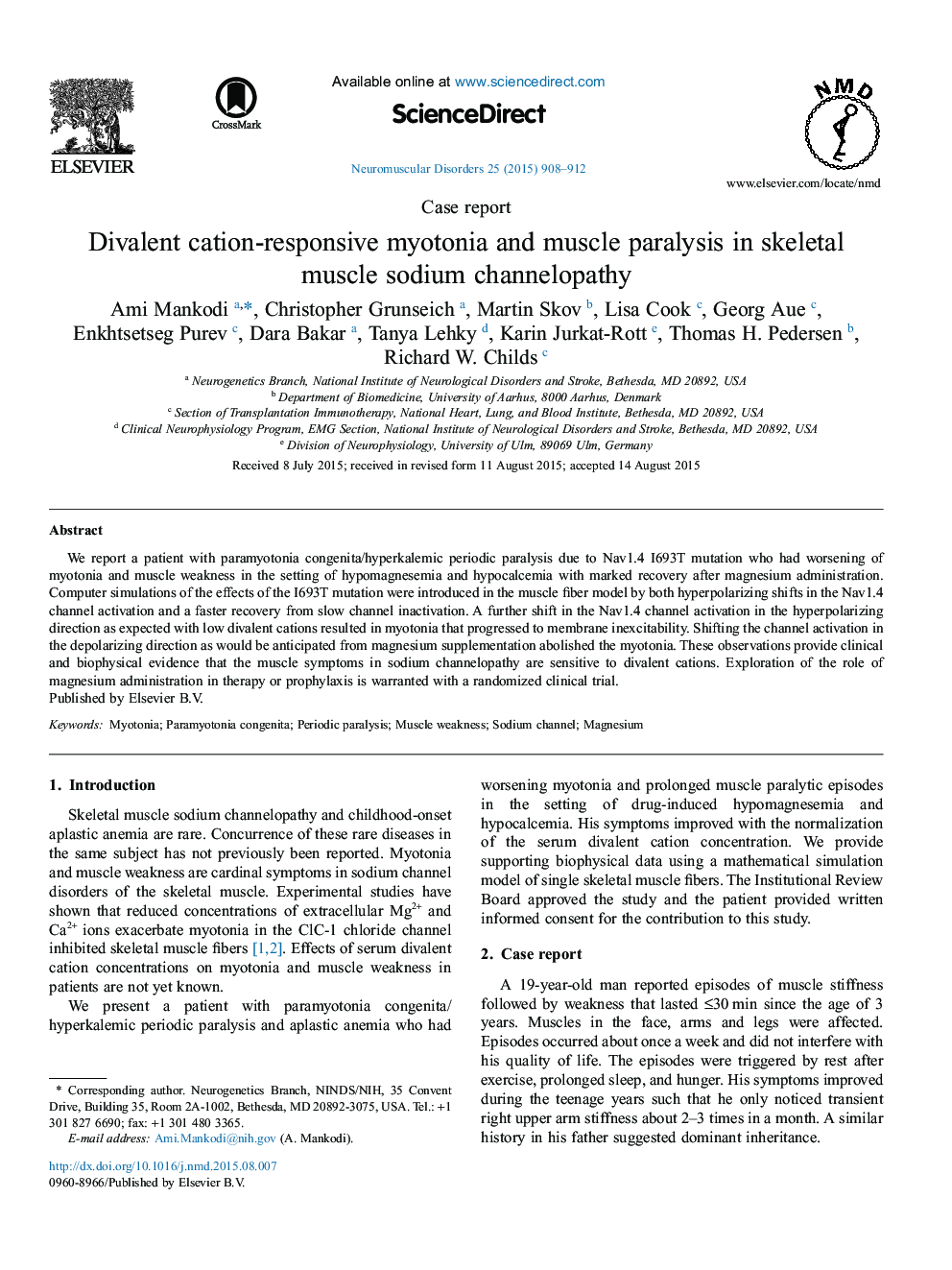| Article ID | Journal | Published Year | Pages | File Type |
|---|---|---|---|---|
| 3078834 | Neuromuscular Disorders | 2015 | 5 Pages |
•A case report and computer simulations of the Nav1.4 I693T effects on single muscle fibers.•Myotonia and muscle paralysis sensitive to divalent cation levels in sodium channelopathy.•The Nav1.4 activation sensitive to extracellular Mg2+ and Ca2+ concentration.•Small changes in Nav1.4 activation markedly altered susceptibility to myotonia and loss of excitability.
We report a patient with paramyotonia congenita/hyperkalemic periodic paralysis due to Nav1.4 I693T mutation who had worsening of myotonia and muscle weakness in the setting of hypomagnesemia and hypocalcemia with marked recovery after magnesium administration. Computer simulations of the effects of the I693T mutation were introduced in the muscle fiber model by both hyperpolarizing shifts in the Nav1.4 channel activation and a faster recovery from slow channel inactivation. A further shift in the Nav1.4 channel activation in the hyperpolarizing direction as expected with low divalent cations resulted in myotonia that progressed to membrane inexcitability. Shifting the channel activation in the depolarizing direction as would be anticipated from magnesium supplementation abolished the myotonia. These observations provide clinical and biophysical evidence that the muscle symptoms in sodium channelopathy are sensitive to divalent cations. Exploration of the role of magnesium administration in therapy or prophylaxis is warranted with a randomized clinical trial.
